What are the rules for adding and subtracting fractions?

Jenn, Founder Calcworkshop®, 15+ Years Experience (Licensed & Certified Teacher)
Great question!
That’s exactly what you’re going to learn in today’s math lesson!
After the lesson you’ll have the knowledge to tackle fractions with like and unlike denominators with ease.
In addition, you’ll be able to practice your skills with the worksheets below.
Imagine you are cleaning up after a holiday dinner. You notice that there is 5/8 of an apple pie and 2/8 of a pumpkin pie leftover.
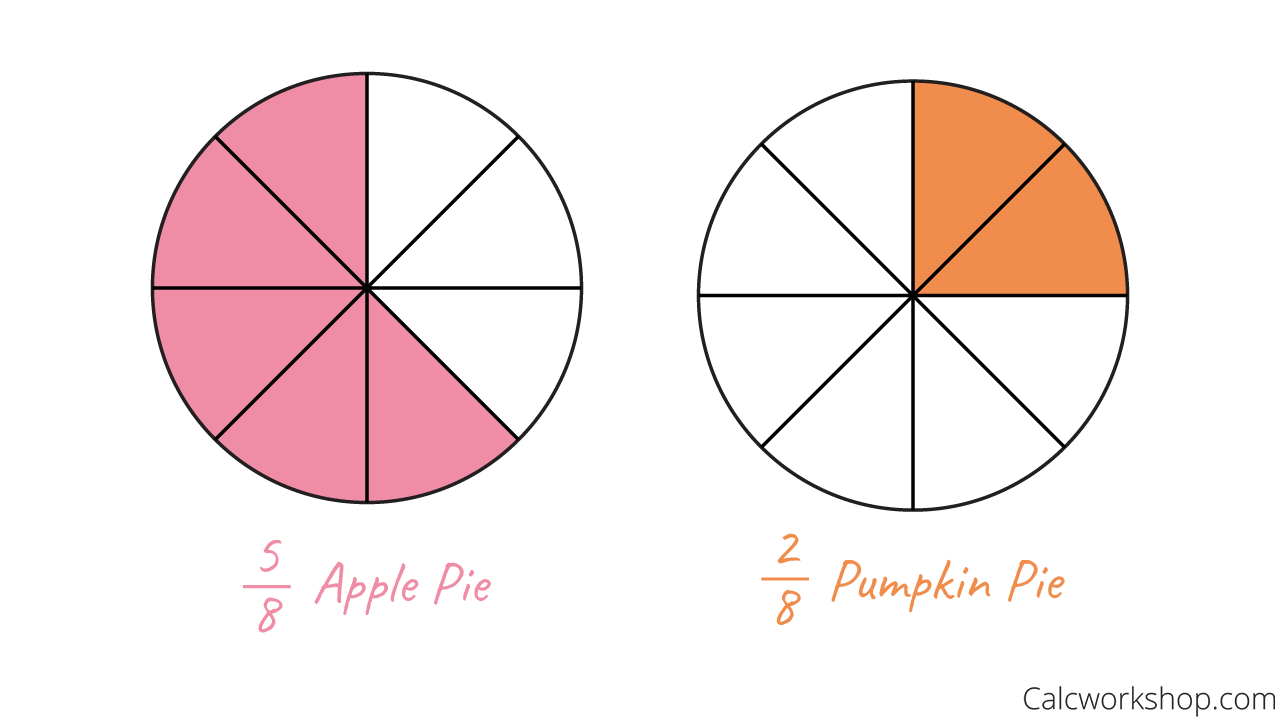
Adding Fractions with Pictures
As you can see, if we count the number of pieces, 5/8 and 2/8 means we have 7/8 leftover or 7 out of 8 pieces!
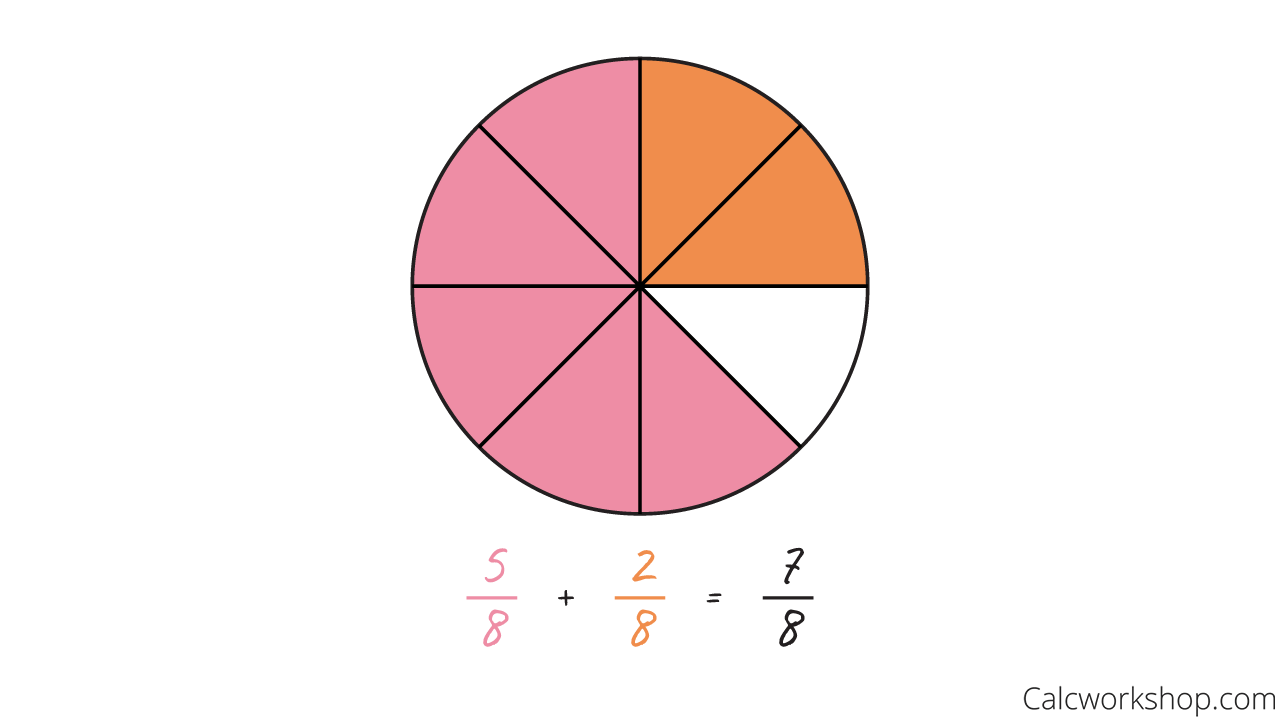
Adding Fractions — Visual
But what do you do when drawing a picture isn’t feasible?
You use the steps for how we add and subtract fractions!
With Like Denominators
First, you check to see if the fractions have the same denominators.
If the fractions do have the common denominators, then you keep the denominator and add or subtract the numerators.
Example #1
Find the sum of 3/5 and 1/5.
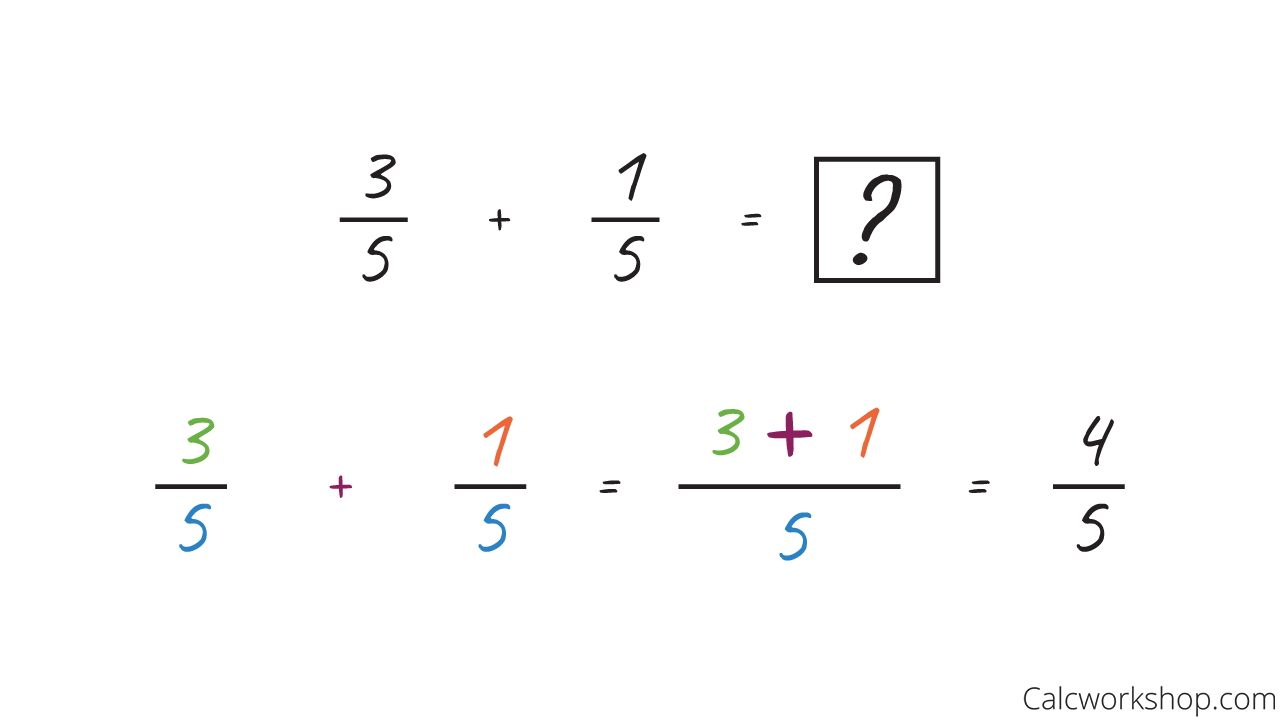
Adding Fractions with Common Denominators
Example #2
Find the difference between 7/12 and 2/12.
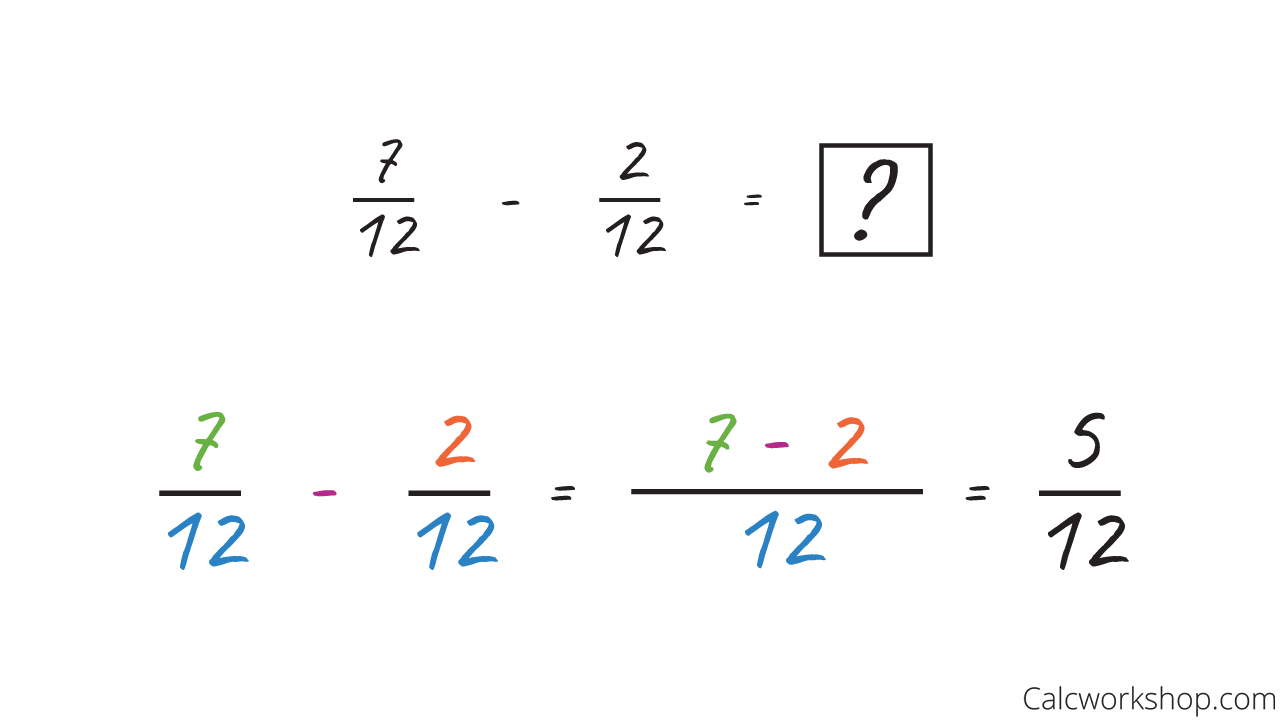
How To Subtract Fractions with the Same Denominator
With Unlike Denominators
If the fractions have different denominators, then you’ll complete these 3 initial steps.
- Find the Least Common Denominator (LCD).
- Convert each fraction to an equivalent fraction with the LCD as the new denominator.
- Then you will add or subtract the numerators while keeping the new common denominator the same as discussed on The Math Page.
Remember, when determining the LCD, all we have to do is find the least common multiple (LCM)!
Example #1
Find the difference between 2/3 and 5/9.
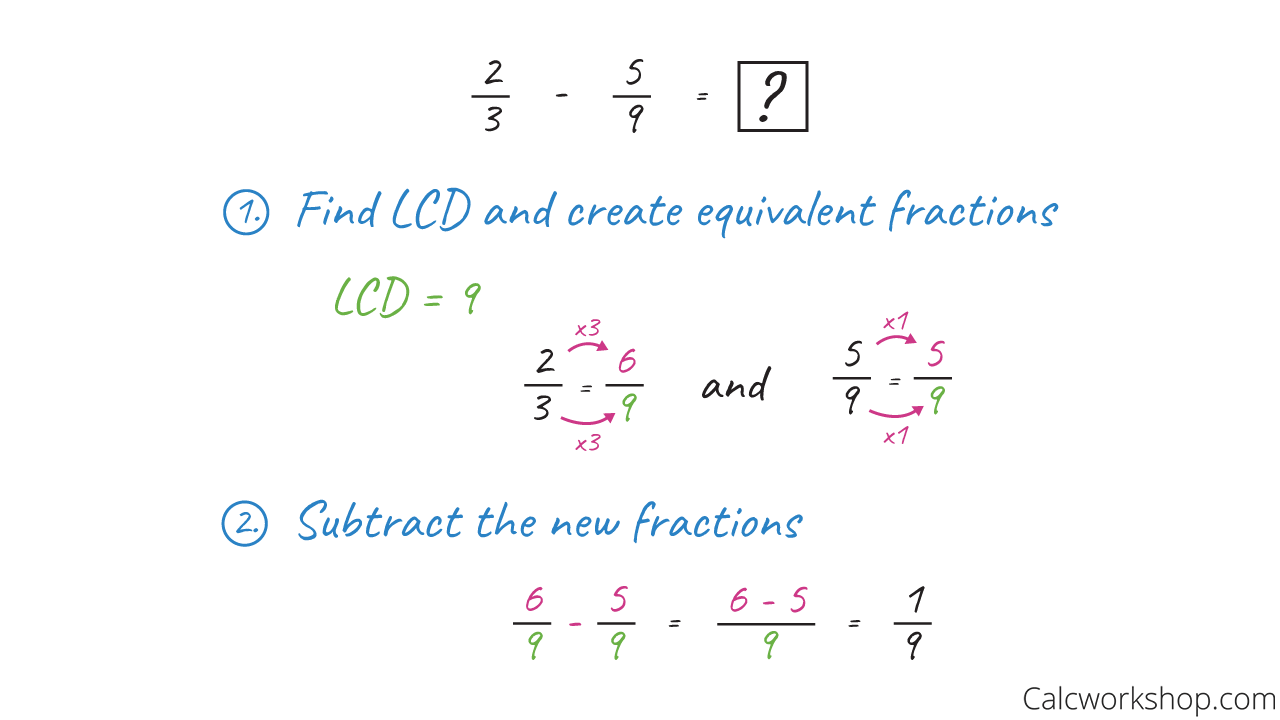
Subtracting Fractions with Unlike Denominators
Example #2
Find the sum of 1/2 and 2/3.
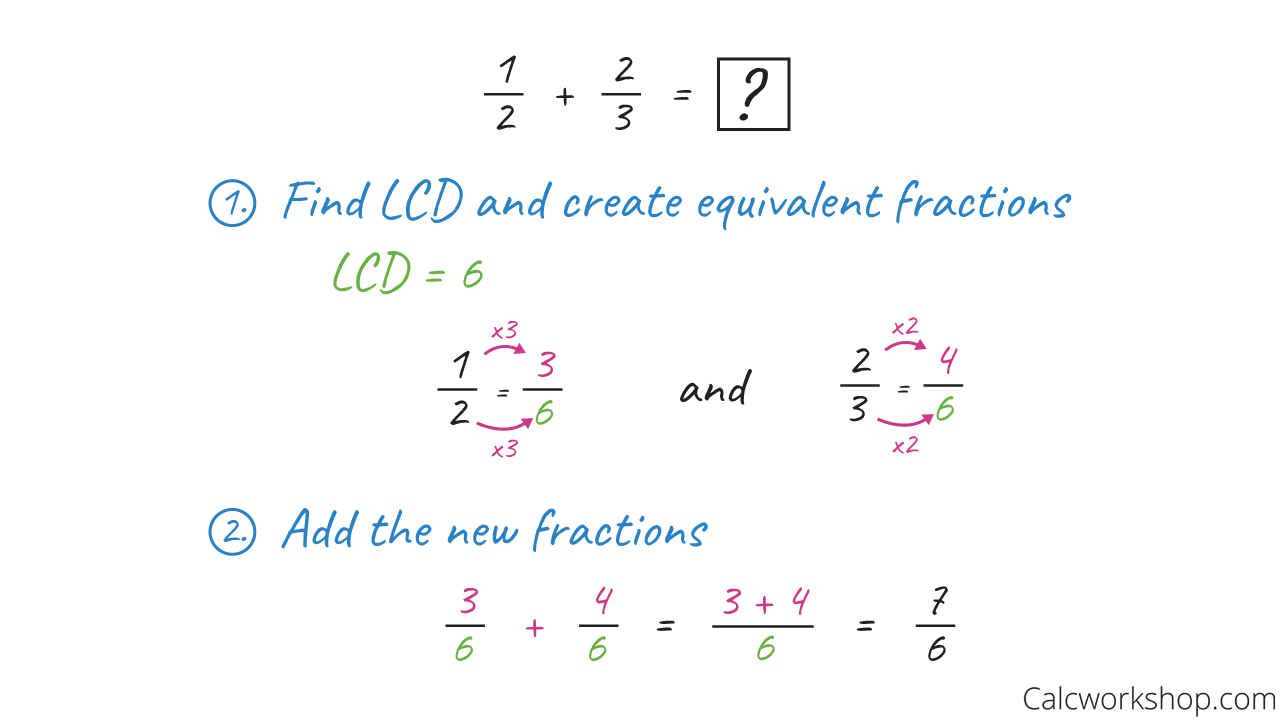
How To Add Fractions with Different Denominators
Then, you will reduce the resulting sum or difference to the lowest terms by dividing the numerator and denominator by the greatest common factor (GCF).
And finally, if necessary, you will convert improper fractions to whole or mixed numbers.
Let’s look at a few more problems.
Example #3
Find the sum of 1/2 and 3/10.
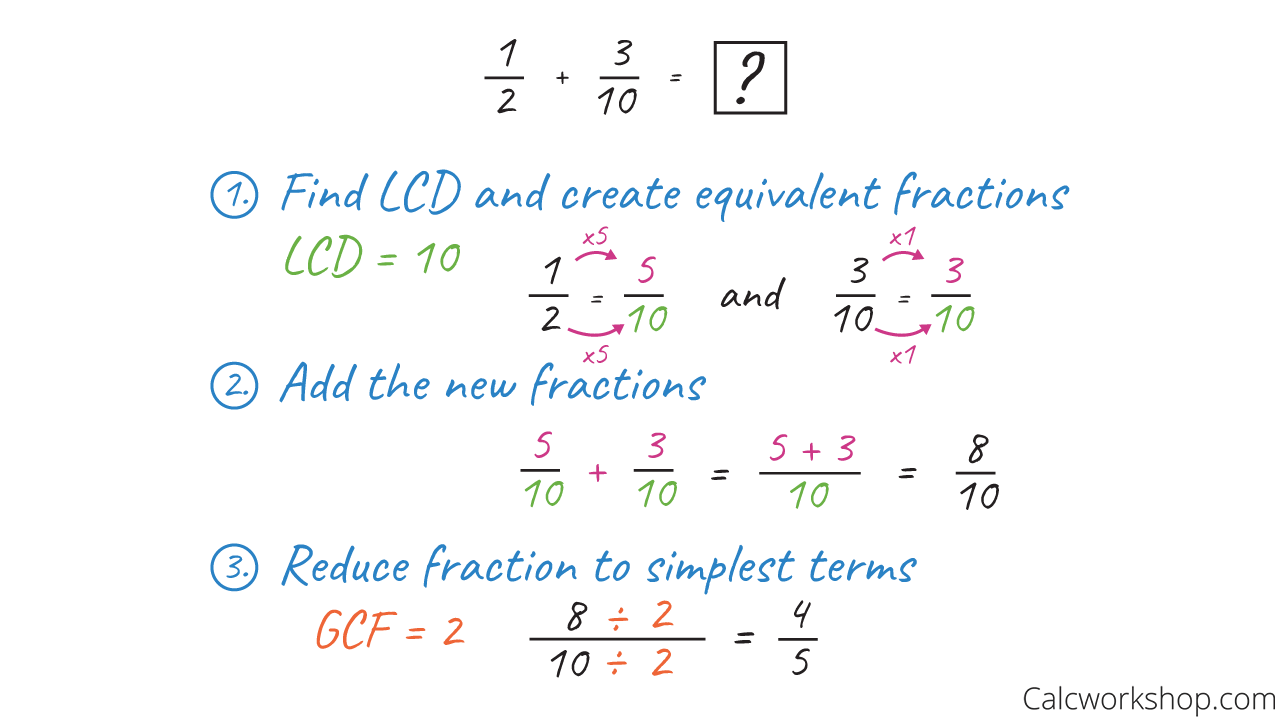
Add and Simplify
Example #4
Find the difference between 10/3 and 9/5.
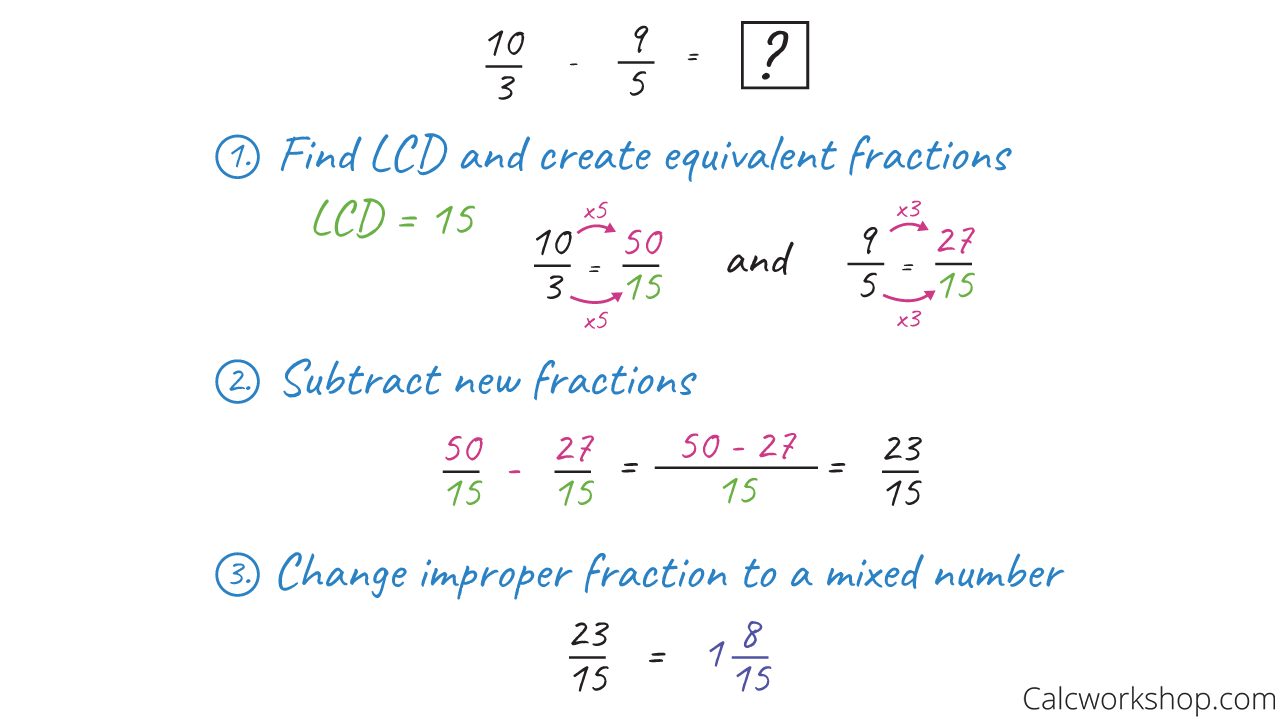
How to Subtract an Improper Fraction — Example
Adding And Subtracting Mixed Fractions
But there are many times when we are asked to add or subtract mixed numbers and improper fractions.
Whenever this happens, you must first transform the mixed number into an improper fraction or the improper fraction into a mixed number.
Personally, I find that changing mixed numbers to improper fractions is always easier!
And then, we follow the steps outlined above.
Example #1
Find the sum of 1 and 1/8 and 7/6.
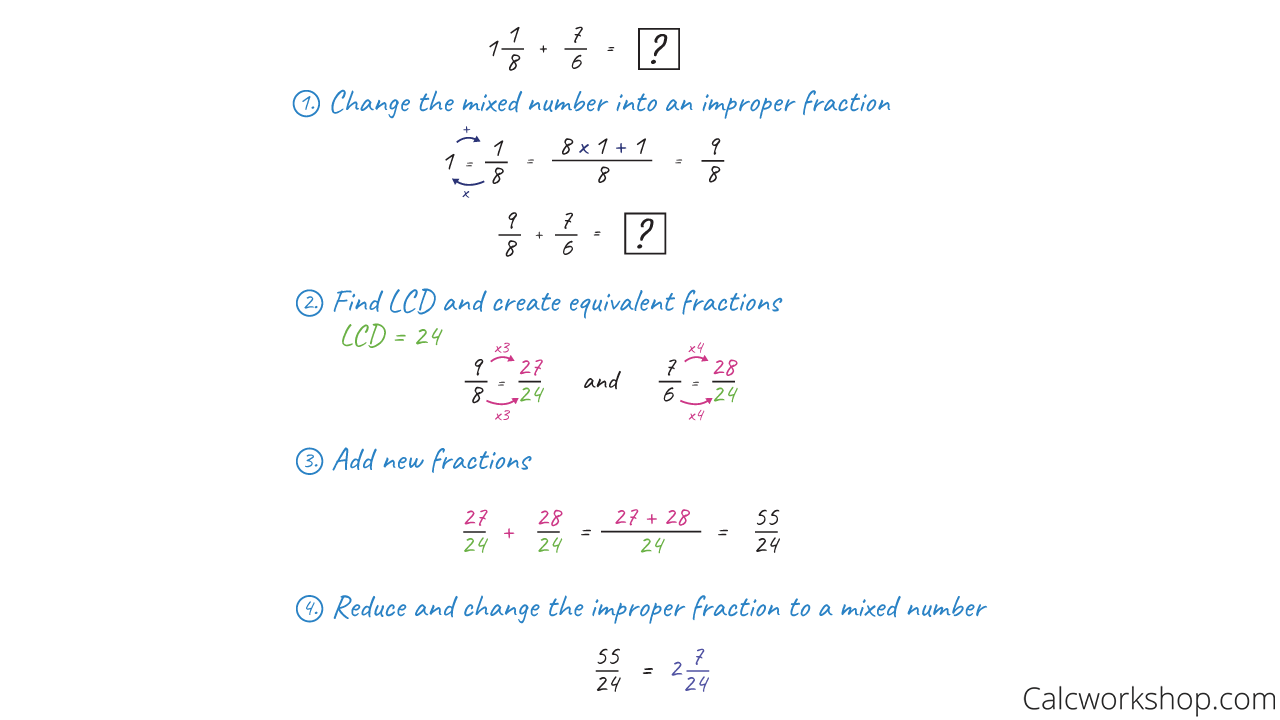
Add Mixed Numbers (LCD) — Example
Worksheet (PDF) — Hands on Practice
Put that pencil to paper in these easy to follow worksheets — expand your knowledge!
Adding and Subtracting Fractions — Practice Problems
Adding and Subtracting Fractions — Step-by-Step Solutions
Final Thoughts
Throughout the video lesson below, you’ll learn:
- The rules for adding and subtracting fractions on more advanced problems.
- How to find the LCD, which is nothing more than finding the LCM, to create common denominators.
- The process to add mixed numbers, whole numbers, improper fractions, and even how to handle three fractions at one time.
It’s a fun process when you understand the fundamentals!
Let’s go!
Video Tutorial — Full Lesson w/ Detailed Examples
1 hr 35 min
- Introduction to Video
- 00:00:45 – How do you work with fractions?
- 00:05:06 – Fractions with common denominators and reduce to simplest terms (Examples #1-4)
- 00:13:24 – Using fractions with uncommon denominators and simplify results (Examples #5-8)
- 00:31:36 – Solve two or more fractions and reduce to lowest terms(Examples #9-12)
- 00:52:02 – Calculate the mixed numbers and simplify results (Examples #13-16)
- 01:08:05 – Add or subtract fractions and whole numbers and reduce to simplest terms (Examples #17-18)
- 01:16:18 – Addition and Subtraction for three fractions as indicated and reduce to lowest terms (Example #19)
- 01:22:26 – Solve three fractions and leave in simplest terms (Examples #20-21)
- Practice Problems with Step-by-Step Solutions
- Chapter Tests with Video Solutions
Get access to all the courses and over 450 HD videos with your subscription
Monthly and Yearly Plans Available
Still wondering if CalcWorkshop is right for you?
Take a Tour and find out how a membership can take the struggle out of learning math.